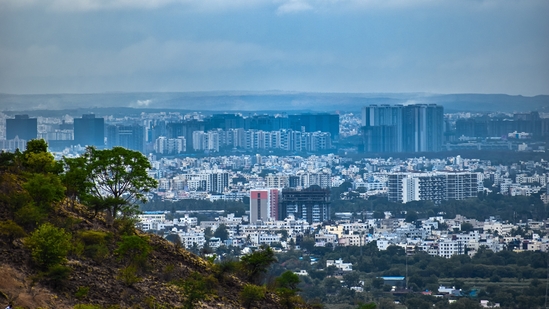What the budget does for politics
The budget aims to appeal to BJP's urban middle class, solidify support in Delhi, and bolster its Bihar narrative ahead of upcoming elections.
The budget has three political objectives in mind. The first sends a message to the Bharatiya Janata Party’s, and more importantly, Rashtriya Swayamsevak Sangh’s core base of the middle class urban Indian. The second seeks to consolidate the BJP’s advantage among the non-poor in the city-state of Delhi, which will vote on February 5. And the third is to build a strong narrative for the BJP-led National Democratic Alliance’s poll pitch in the crucial state of Bihar, which will go to polls towards the end of the year.

The first and the second objectives have been achieved with the same instrument: an easing of the income tax burden. The third will exploit various announcements in the budget to build a strong pitch of Vikas, or development, for the alliance of Janata Dal (United) and the BJP along with other smaller parties in Bihar.
There are two ways to see this approach: first, as purely transactional and tactical; and second, as a more subtle and long-term political message.
Let us take Delhi first. The BJP has been facing a rather peculiar predicament of doing very badly in assembly elections in Delhi despite registering overwhelming victories in Lok Sabha election in the last decade. This clearly means that a section of voters ditches the BJP for the AAP in assembly elections. The Model Code of Conduct in Delhi had forbidden the budget from making any Delhi-specific announcements. The BJP has anyway matched pretty much all of the Aam Aadmi Party’s populist promises in its election manifesto. By cutting income tax rates, the budget, and by extension the BJP, hopes to exploit Delhi’s unique characteristic of what is perhaps the highest share of income tax payers to voters.
How much of a traction will it generate? We do not have public data on number of income tax payees by state and UT, leave alone by individual slabs, in the country. However, what we do have data for is Delhi’s share in direct tax collections. Out of the total ₹19.6 lakh crore of direct taxes collected in 2023-24, Delhi contributed more than ₹2 lakh crore, a share of over 10%. This is much higher than Delhi’s all-India share in terms of GSVA of just 3.6% in 2023-24. Other official statistics support the theory of this move generating electoral tailwinds for the BJP. Delhi has the highest proportion of salaried workers in the country by a distance — Delhi’s share is 56% compared to the national average of 22% — according to the Periodic Labour Force Survey (PLFS), the official source of employment statistics in the country. To be sure, the BJP has always had an advantage among the relatively better off in Delhi, and it remains to be seen whether this move gives the BJP a much needed last mile push over the AAP.
Similarly, the Nitish Kumar-led NDA government in Bihar can now brandish many schemes announced in the budget in the election campaign in the latter half of the year. The list includes new airports, a plan to boost farm incomes with crops exclusive to Bihar (such as fox nuts), irrigation infrastructure in flood-prone areas, new educational institutes and expansion of capacity in existing ones, and a push to the Buddhist tourism circuit in the state. While the tangible allocation for these programmes might not be very high, just the sheer number of times Bihar was mentioned in the speech — this was also the case in the budget presented in July 2024 — will generate political capital for the NDA in the state.
The other, equally important, political message from the budget goes beyond immediate electoral calculations. A cyclical growth slowdown, relatively higher inflation and the BJP’s U-turn from criticising to fully embracing what it used to call freebies has, in recent years, generated a level of cynicism within the cohort of urban middle class (perhaps also upper caste) voters which has been BJP’s core support base in not just times of strength but even adversity. This is also a cohort which supplies a lot of foot soldiers to the BJP’s ideological parent RSS.
By revising income tax slabs which will reduce the tax burden and promising to reduce compliance and advance tax burden on people who are not necessarily poor (such as parents whose children study abroad or those who have two self-occupied properties) the BJP is sending a clear message to its most loyal base that it has not reneged on its promise to them or left them to the mercy of trickle down benefits from the long-term project of making India a developed country by 2047. Clearly, the BJP expects them to continue to stay loyal to it in return. In a way, this move also tries to assuage the feeling of a middle-class base which first voted for the BJP in 2014, not because of its Hindutva appeal but the promise of economic well-being, as captured in the slogan of Achhe Din (Good Days).
Similarly, the budget’s focus on Bihar will likely placate the JD(U), a crucial and not necessarily ideologically aligned ally of the government into softening its opposition or reservations on critical legislations such as the Waqf Board bill or the changes to UGC norms on appointing vice chancellors in universities.






